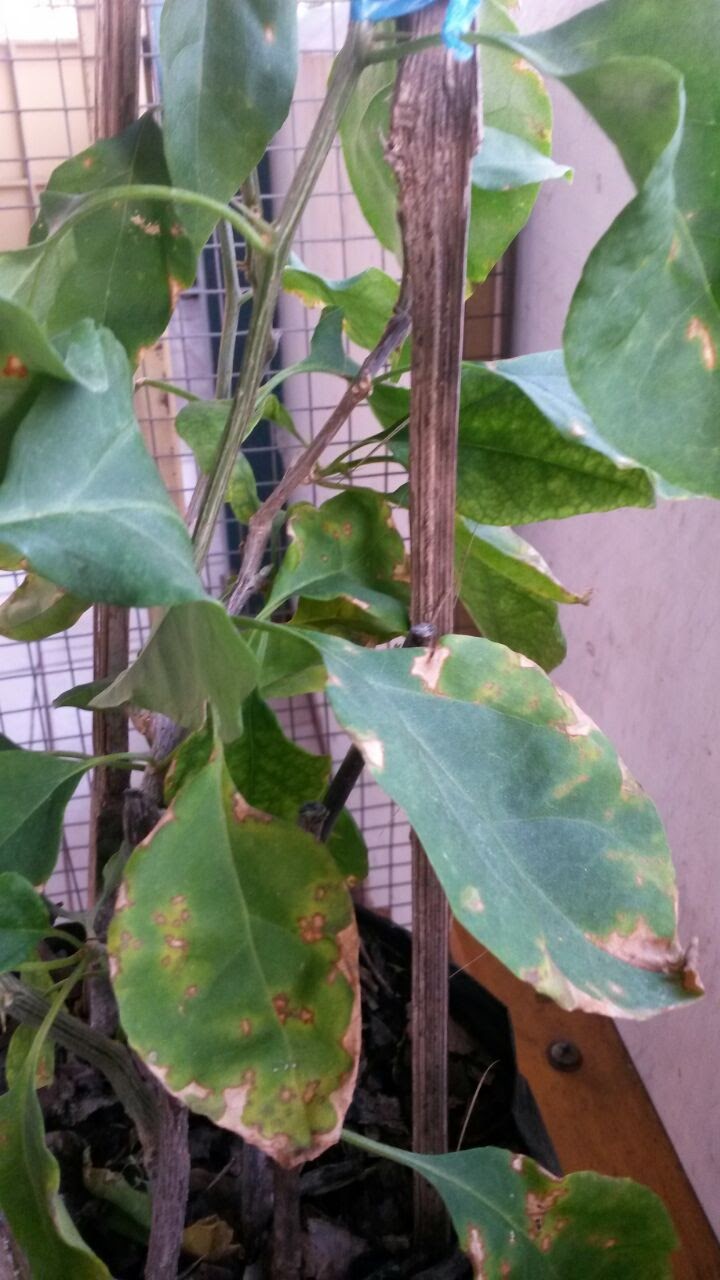Bougainvillea leaves can turn brown for a variety of reasons. Sometimes it’s simply due to the plant not getting enough water and the leaves will recover once you give it a good watering. However, if the leaves are turning brown and falling off, it could be a sign of overwatering or disease.
If you think your bougainvillea has a disease, it’s best to take it to a nursery or landscaper for diagnosis and treatment.
If you have bougainvillea plants, you may have noticed that the leaves are turning brown. There are several reasons why this may be happening, but don’t worry – your plant is most likely not dying. Here are some possible causes of brown leaves on bougainvillea:
1. Too Much Watering
Bougainvilleas are native to dry regions and thus do not like to be overwatered. If you notice that the leaves on your plant are starting to turn brown and wilt, it’s probably because you’re watering it too much.
Cut back on watering and let the soil dry out between watering sessions.
2. Not Enough Sunlight
Bougainvilleas need a lot of sunlight to thrive, so if they’re not getting enough sun, the leaves will start to turn brown.
Move your plant to a sunny spot and make sure it gets at least 6 hours of direct sunlight per day.
3. Pests or Diseases
Sometimes, brown leaves can be caused by pests or diseases attacking the plant.
If you suspect this is the case, take a close look at the affected leaves for signs of insects or fungal growth. Treat accordingly with insecticidal soap or fungicide if needed.
Common Bougainvillea Problems
What Does Over Watered Bougainvillea Look Like?
Bougainvillea are beautiful, vining plants that are often used as ornamental plants in gardens. They are native to South America and thrive in warm climates. Bougainvillea are drought-tolerant and can tolerate periods of dryness, but they will not tolerate being over-watered.
Over-watering bougainvillea can lead to a number of problems, including leaf drop, root rot, and fungal diseases.
When bougainvillea are over-watered, the leaves will start to turn yellow and fall off the plant. The stems may also become soft and weak.
If the roots of the plant are waterlogged, they will start to rot. This can lead to a number of problems for the plant, including nutrient deficiencies and an inability to take up water from the soil. Fungal diseases can also develop in over-watered bougainvillea, particularly if the conditions are humid.
These diseases can cause further leaf loss and damage to the roots of the plant.
To avoid these problems, it is important to only water bougainvillea when the soil is dry to touch. Allow the top few inches of soil to dry out before watering again.
If you live in a hot climate, you may need to water your bougainvillea more frequently during summer months. However, be sure not to overwater – remember that these plants are drought tolerant!
How Do You Revive a Dying Bougainvillea?
When it comes to reviving a dying bougainvillea, there are a few things you can do to help bring it back to life. First, check the plant for any signs of pests or diseases and treat accordingly. Next, make sure it is getting enough water – but not too much!
– and fertilize regularly. Finally, provide the plant with some protection from the sun if possible. With a little TLC, your bougainvillea should soon be back to its vibrant self in no time!
How Often Should Bougainvillea Be Watered?
Bougainvillea are native to South America, so they’re used to hot, humid weather. They thrive in full sun and well-drained soil, and they’re pretty drought tolerant. That said, during extended periods of drought your bougainvillea may drop its leaves and stop flowering.
To avoid this, water your plant deeply once or twice a week during dry spells.
How Can I Tell If My Bougainvillea Has Root Rot?
Bougainvillea are susceptible to a number of different fungal diseases that can cause root rot. Some of the most common signs of root rot in bougainvillea include:
-Yellowing or wilting leaves
-Stunted growth
-Dieback of stems and branches
-Loss of vigor and bloom
If you suspect your bougainvillea has root rot, it is important to act quickly. The first step is to improve drainage around the plant. If the problem is caused by a fungal disease, you may also need to treat the plant with a fungicide.

Credit: www.reddit.com
Overwatered Bougainvillea Diseases
Bougainvillea are beautiful, flowering plants that are popular in many gardens. However, they can be susceptible to a number of diseases if they are overwatered. Here are some of the most common diseases caused by overwatering bougainvillea:
1. Root Rot – This is perhaps the most common disease caused by overwatering bougainvillea. The roots of the plant become waterlogged and begin to rot, which can kill the plant.
2. Powdery Mildew – This fungal disease affects the leaves and stems of the plant, causing them to develop a white, powdery growth.
Left unchecked, powdery mildew can kill the plant.
3. Leaf Spot – Another fungal disease, leaf spot causes brown or black spots to form on the leaves of the plant. These spots can eventually lead to leaf drop and weaken the plant overall.
4. Stem Rot – Stem rot is caused by bacteria that enter through wounds in the stem and cause it to rot from the inside out. This can kill the plant if left untreated.
5. Crown Gall – Crown gall is another bacterial infection that attacks bougainvillea plants at their base, causing galls (swellings) to form on the roots or stem.
Conclusion
Bougainvillea leaves are a common sight in many gardens. They are known for their beautiful colors and hardiness. However, sometimes bougainvillea leaves will turn brown.
This can be due to several factors, including drought, pests, or disease. While brown leaves may not be as aesthetically pleasing as green ones, they are still part of the plant and play an important role in its health.


